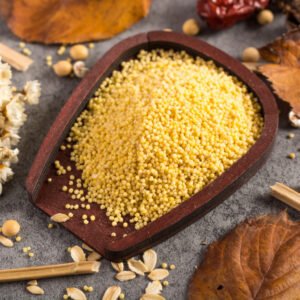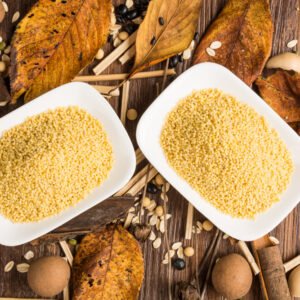India’s spice legacy stretches back thousands of years, with each region contributing distinct flavors that define local cuisines. As we move through 2026, food enthusiasts and chefs worldwide are rediscovering these regional treasures that have remained hidden in plain sight. Let’s explore which regional Indian spices are making waves this year and why they deserve a place in your pantry.
What Makes Regional Indian Spices Special?
Regional Indian spices carry stories of geography, climate, and cultural heritage. Unlike mass-produced varieties, these spices grow in specific microclimates that give them unique characteristics you cannot replicate elsewhere. The Western Ghats nurture black pepper with distinct pungency, while Himalayan valleys produce saffron with unmatched aroma.
Each state across India cultivates spices adapted to local soil conditions and traditional farming methods. These practices, passed down through generations, preserve flavor profiles that set regional varieties apart from their commercial counterparts. Food lovers in 2026 are seeking these authentic tastes, driving renewed interest in location-specific spice varieties.
CMS Industries recognizes this shift toward authentic regional products. As manufacturers and exporters of agricultural products including spices, pulses, and grains, they connect global markets with India’s agricultural bounty while maintaining quality standards that preserve regional characteristics.
Also Read:- Top 10 Starch Manufacturers in India
Top Regional Indian Spices Trending in 2026
Kashmiri Saffron: The Red Gold
Kashmiri saffron remains unmatched in quality worldwide. Grown in the Pampore region of Kashmir, this spice costs more than gold by weight. What makes it special? The deep red threads release a distinctive aroma and flavor that transform simple rice dishes into aromatic masterpieces.
The 2026 trend sees chefs using Kashmiri saffron beyond traditional biryanis. Modern applications include infused beverages, artisan chocolates, and even skincare products. The limited growing season and hand-harvesting process keep this spice rare and prized.
Naga King Chili (Bhut Jolokia): Beyond the Heat
The Northeast’s contribution to spice lovers comes in the form of Naga king chili, also known as ghost pepper. Once holding the Guinness World Record for hottest chili, this pepper brings more than just fire. It carries a fruity, slightly smoky flavor that sophisticated palates appreciate.
Restaurants in 2026 are using Bhut Jolokia in controlled amounts to create complex heat profiles. The trend moves away from pure shock value toward appreciating the layered flavors this regional Indian spice offers. Fermented Naga chili pastes are particularly popular in fusion cuisines.
Kodampuli: Kerala’s Souring Agent
Also called Malabar tamarind or fish tamarind, kodampuli grows wild in Kerala’s rainforests. This dried fruit adds a distinctive sour note to fish curries and lentil preparations. Unlike regular tamarind, kodampuli brings a complex, smoky tartness that defines Kerala cuisine.
The global wellness movement has spotlighted kodampuli for its garcinia content. Food manufacturers in 2026 are exploring this spice for natural food preservation and as a flavor enhancer in plant-based products. Its unique taste profile makes it irreplaceable in authentic South Indian cooking.
Kashmiri Chili: Color Without Chaos
Don’t confuse Kashmiri chili with its fiery cousins. This regional variety provides brilliant red color with mild heat. Cooks across India prefer it for dishes where they want visual appeal without overwhelming spiciness. The powder creates that signature red hue in tandoori dishes and rich gravies.
International chefs are discovering Kashmiri chili’s versatility in 2026. It works beautifully in marinades, adds depth to sauces, and creates visually stunning presentations. The balanced heat level makes it accessible to broader audiences while maintaining authentic Indian character.
Kokum: The Purple Wonder
This purple-black fruit from the Western Ghats acts as a cooling agent in Konkan and Goan cuisines. Kokum’s sour taste comes with a slightly sweet finish, making it perfect for summer drinks and seafood preparations. The dried rinds or kokum butter add distinctive flavor notes you cannot achieve with other souring agents.
Health-conscious consumers drive kokum’s popularity in 2026. Sol kadhi, a traditional pink drink made with kokum and coconut milk, appears on trendy cafe menus worldwide. The spice’s natural cooling properties make it perfect for hot climate cuisines.
Panch Phoron: Bengali Five-Spice Blend
This equal-parts mixture of cumin, fennel, fenugreek, nigella, and black mustard seeds defines Bengali cooking. Unlike pre-ground spice blends, panch phoron gets tempered in hot oil, releasing aromatic compounds that perfume entire dishes. Each seed pops and releases its individual character while creating a harmonious whole.
The 2026 trend sees home cooks adopting panch phoron for its simplicity and impact. A quick tempering transforms simple vegetables into restaurant-worthy dishes. This regional spice blend proves you don’t need complicated recipes for impressive results.
Guntur Chili: The Heat Champion
From Andhra Pradesh comes Guntur chili, known for intense heat and rich red color. This variety dominates South Indian pickles and curry powders. The chilies grow in specific Andhra soil conditions that concentrate their capsaicin content, making them significantly hotter than average red chilies.
Export markets particularly value Guntur chilies for their consistent quality. CMS Industries includes such premium regional varieties in their spice export portfolio, meeting international demand for authentic Indian heat.
Stone Flower (Dagad Phool): The Mystery Lichen
This lichen, not technically a spice but used as one, grows on rocks in hilly regions. Stone flower adds earthiness and depth to garam masala blends, particularly in Maharashtra and Karnataka. Its mineral-like taste enhances meat dishes and gives Hyderabadi biryani its characteristic flavor.
Chefs in 2026 are experimenting with stone flower in unexpected ways. Its umami qualities work well in vegetarian dishes that need depth. The spice’s unusual origin story also appeals to diners seeking culinary adventures.
Why Regional Indian Spices Matter in 2026
Food authenticity drives purchasing decisions more than ever. Consumers research ingredient origins and seek products that support traditional farming communities. Regional Indian spices meet these demands while offering taste experiences unavailable through generic alternatives.
Climate variations across India create natural terroirs for spices. Munnar’s cardamom differs from Karnataka’s version, just as Wayanad pepper carries different notes than Goan pepper. Recognizing and celebrating these differences enriches global cuisine while preserving agricultural diversity.
The farm-to-table movement extends to spices in 2026. Transparent sourcing allows consumers to trace their turmeric to specific districts in Tamil Nadu or their cumin to Rajasthan farms. This traceability ensures quality while supporting rural economies.
How to Source and Store Regional Spices
- Buy whole when possible. Whole spices maintain freshness longer than ground versions. Purchase small quantities you’ll use within six months for peak flavor.
- Check origin labels. Authentic regional spices specify their growing location. Generic “Indian turmeric” won’t match Alleppey turmeric’s curcumin content and color.
- Store properly. Keep spices in airtight containers away from light and heat. Glass jars in cool, dark cupboards work best. Avoid storing above stoves where temperature fluctuations accelerate flavor loss.
- Toast before grinding. Dry-roasting whole spices in a pan awakens their essential oils. Grind them fresh for maximum impact. This extra step makes noticeable differences in final dishes.
- Understand usage ratios. Regional Indian spices often concentrate more flavor than standard varieties. Start with smaller amounts when substituting, adjusting to taste.
Reputable suppliers like CMS Industries maintain quality controls that preserve regional characteristics during processing and packaging. Their experience in spice manufacturing ensures authentic products reach international markets.
Cooking Applications for Regional Spices
Traditional Preparations
Each regional spice evolved for specific cooking methods. Kodampuli needs soaking before adding to curries. Panch phoron requires oil tempering at the right temperature. Understanding these traditional applications helps you get authentic results.
Kashmiri saffron releases its color and flavor best in warm milk or liquid before adding to dishes. Bhut Jolokia should be handled with gloves and used sparingly. These region-specific techniques developed over centuries for good reasons.
Modern Fusion
Contemporary chefs blend regional Indian spices with global cuisines. Kokum appears in Mexican salsas. Panch phoron seasons roasted vegetables in European restaurants. Stone flower adds depth to French sauces.
The key lies in understanding each spice’s flavor profile rather than following rigid recipes. Kashmiri chili’s mild heat and color make it perfect for any cuisine needing visual appeal. Naga chili’s fruitiness complements tropical flavors in Southeast Asian fusion.
The Global Market for Regional Spices
International demand for specific Indian spice varieties grows annually. Western chefs once satisfied with generic curry powder now request Telangana turmeric or Salem cardamom. This specificity reflects growing sophistication in global food culture.
Online marketplaces connect regional farmers with worldwide customers. Small-scale producers in remote Indian districts now reach gourmet shops in New York, London, and Tokyo. This direct access benefits both producers and consumers seeking authentic ingredients.
Food service suppliers stock regional varieties to meet restaurant demand. Menu descriptions highlighting “Kashmiri saffron” or “Guntur chili” add authenticity that diners appreciate. These specific callouts justify premium pricing while educating customers about Indian regional diversity.
Sustainability and Fair Trade Concerns
Regional spice production often involves small family farms using traditional methods. Supporting these sources preserves agricultural heritage while providing fair income to rural communities. The 2026 consumer increasingly considers these factors when purchasing.
Organic certification for regional spices grows as farmers adopt sustainable practices. Chemical-free cultivation suits traditional growing methods while meeting international market requirements. This alignment benefits both ecology and economics.
Climate change threatens some regional varieties. Kashmiri saffron cultivation faces water scarcity. Kerala’s monsoon patterns affect black pepper yields. Conscious consumers choose suppliers investing in climate adaptation and farmer support programs.
Health Benefits of Regional Varieties
Regional Indian spices often contain higher concentrations of beneficial compounds than standardized varieties. Alleppey turmeric shows elevated curcumin levels. Kodampuli’s garcinia content attracts wellness-focused consumers. These natural variations occur through traditional cultivation in optimal growing conditions.
Ayurvedic medicine recognizes regional spice differences. Practitioners specify spice origins in formulations, understanding that Jaipur fenugreek differs from Bengal fenugreek. This ancient wisdom aligns with modern nutritional science confirming geographic variations affect compound concentrations.
Anti-inflammatory, antimicrobial, and antioxidant properties vary among regional types of the same spice. Research in 2026 increasingly documents these differences, validating traditional knowledge about location-specific spice benefits.
Building Your Regional Spice Collection
- Start with versatile options. Kashmiri chili and kokum offer immediate applications in various dishes. These provide quick wins when exploring regional varieties.
- Add specialty items gradually. Stone flower and kodampuli serve specific purposes. Purchase these once you have recipes in mind.
- Explore regional blends. Panch phoron and regional garam masala variations introduce multiple flavors through single purchases.
- Connect with knowledgeable suppliers. Companies specializing in Indian spices, including exporters like CMS Industries, provide guidance on regional differences and applications.
- Join online communities. Food forums and social media groups focused on Indian cooking share regional spice experiences and sourcing recommendations.
Future Trends in Regional Spices
The next wave involves hyperlocal varieties. Not just “Kerala pepper” but specific estate or village designations. This wine-like approach to spice appreciation grows among enthusiasts.
Technology assists authentication. Blockchain tracking prevents fraud in high-value spices like saffron. DNA testing verifies geographic origins. These tools protect both consumers and legitimate producers.
Climate-adapted varieties emerge as farmers experiment with heat-tolerant cultivars. These developments ensure regional spice traditions continue despite environmental challenges.
Young Indian chefs champion regional ingredients, creating modern dishes that showcase traditional spices. This culinary movement spreads globally, introducing regional Indian spices to new audiences.
Connect With Quality Regional Spice Suppliers
Whether you’re a home cook exploring Indian cuisine or a professional chef seeking authentic ingredients, choosing the right supplier matters. Quality regional spices transform ordinary dishes into memorable meals.
CMS Industries brings decades of experience in sourcing, processing, and exporting Indian spices and agricultural products. Their commitment to quality ensures that regional characteristics survive the journey from farm to your kitchen. Connect with established suppliers who understand the nuances of regional varieties and maintain the standards these special spices deserve.
Frequently Asked Questions
Q.What makes regional Indian spices different from regular spices?
Regional varieties grow in specific geographic areas with unique soil, climate, and water conditions. These environmental factors create distinct flavor profiles, colors, and aroma compounds that generic spices cannot replicate. Traditional cultivation methods passed through generations preserve these characteristics, making regional spices more flavorful and often more potent than mass-produced alternatives.
Q.How can I verify if I’m buying authentic regional spices?
Look for suppliers who specify exact geographic origins rather than just “Indian spices.” Check for certifications from recognized agricultural bodies. Authentic regional spices often cost more due to limited production and quality standards. Reputable exporters and manufacturers provide traceability documentation. Physical characteristics like color intensity, aroma, and whole spice appearance also indicate authenticity.
Q.Can regional spices be substituted for regular varieties in recipes?
Yes, but adjust quantities carefully. Regional varieties often contain more concentrated flavors and active compounds. Kashmiri chili, for example, has less heat than regular red chili despite similar color. Start with smaller amounts when substituting regional varieties, then adjust based on taste. Understanding each spice’s specific characteristics helps make successful substitutions.
Q.What’s the best way to store regional spices for maximum freshness?
Store whole regional spices in airtight glass or ceramic containers in cool, dark places. Avoid plastic containers that can absorb flavors. Keep them away from heat sources, direct sunlight, and humidity. Whole spices maintain quality for up to two years, while ground versions last six months. Buy smaller quantities more frequently rather than large amounts that lose potency before use.
Q.Which regional Indian spices should beginners try first?
Start with Kashmiri chili for mild heat and color, panch phoron for easy Bengali-style tempering, and kokum for cooling summer drinks. These three offer immediate, noticeable results without requiring extensive technique adjustments. Once comfortable, expand to specialty items like kodampuli for South Indian curries or stone flower for complex garam masala blends. This graduated approach builds confidence and understanding.




